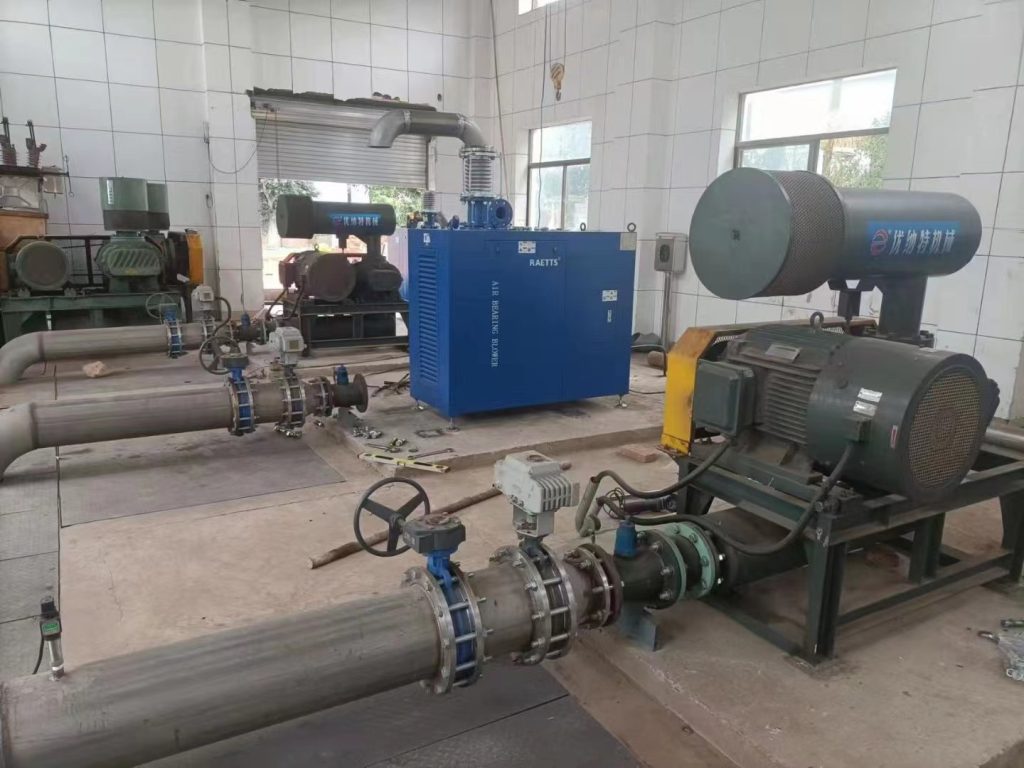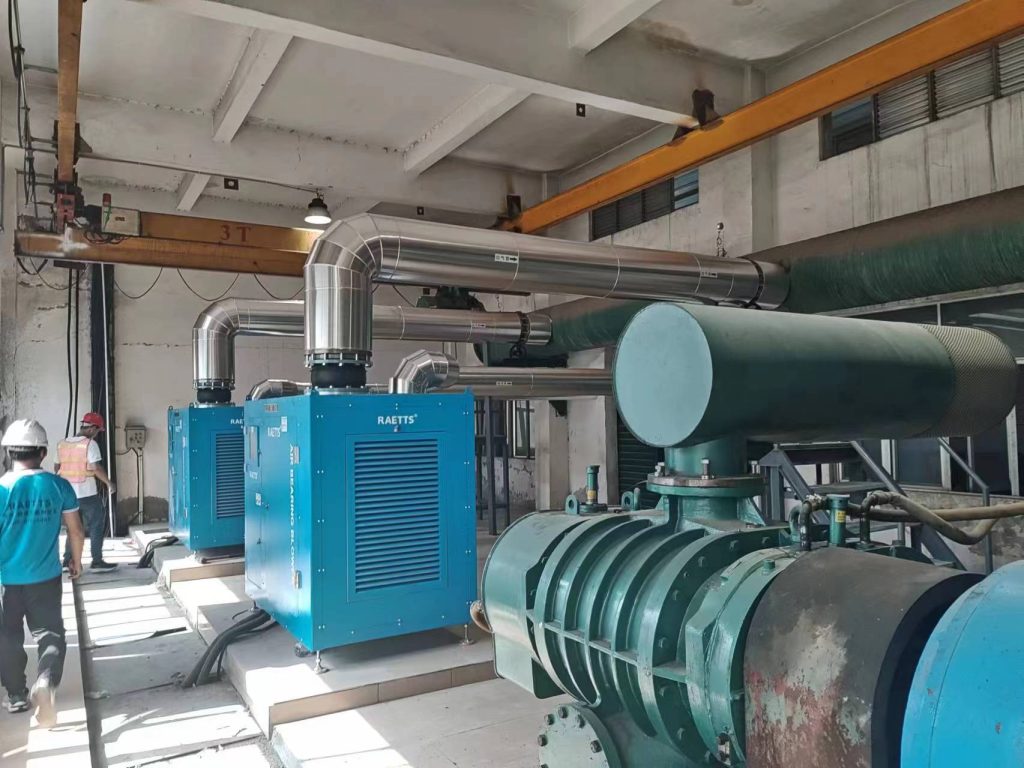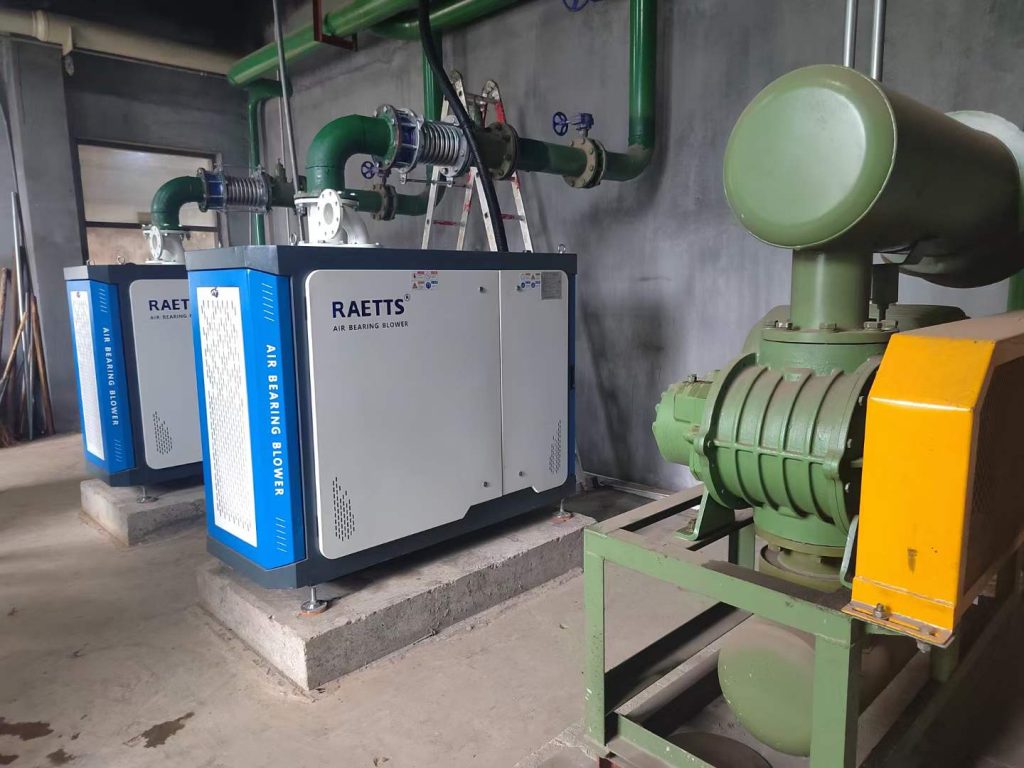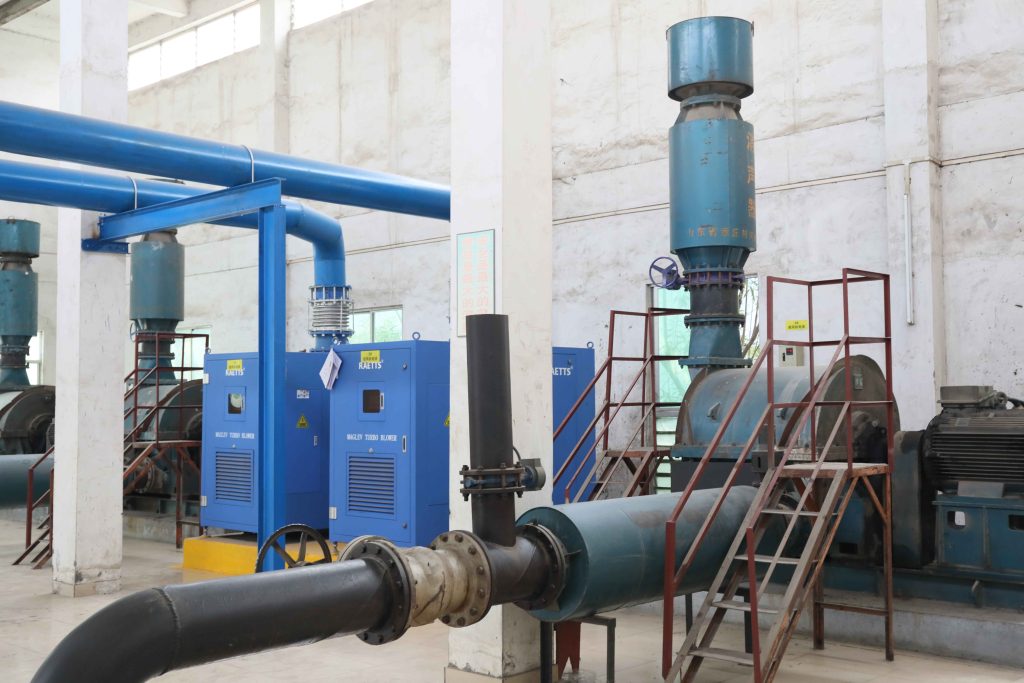Why More Wastewater Treatment Plants Are Upgrading from Roots Blowers to Maglev Blowers
Introduction
In wastewater treatment plants (WWTPs), aeration is the most energy-intensive process. Studies show that blowers alone account for 40–60% of the total electricity consumption of a WWTP. Traditionally, Roots blowers have been widely used because of their simple design and relatively low initial cost. However, as energy prices rise and sustainability becomes a global focus, operators are shifting towards Maglev Turbo Blowers for higher efficiency, lower operational costs, and long-term reliability.
This article explores the differences between Roots blowers and Maglev blowers, highlights real-world cost comparisons, and explains why upgrading is becoming the new standard in modern wastewater treatment.

1. The Limitations of Roots Blowers in Wastewater Treatment
Roots blowers have served the industry for decades, but they come with several challenges that directly impact plant operation:
-
High energy consumption – Roots blowers typically operate at lower efficiency (40–55%) compared to turbo technology, leading to 30–40% higher electricity costs.
-
Noise and vibration – Noise levels of 110–120 dB are common, often requiring soundproofing measures. Vibration also increases wear on components.
-
Frequent maintenance – Oil, belts, gears, and bearings require regular replacement, adding 5–7% of equipment value per year in maintenance costs.
-
Shorter service life – Mechanical contact between parts reduces long-term reliability, especially under continuous operation.
For a wastewater treatment plant, these issues translate into higher OPEX (operational expenditure) and more downtime.

2. How Maglev Turbo Blowers Solve These Problems
Maglev blowers use magnetic bearings instead of mechanical contact. The impeller literally levitates during operation, which brings several advantages:
-
Energy savings – With efficiency above 75%, Maglev blowers reduce electricity consumption by 30–40% compared to Roots.
-
Oil-free and contact-free – No gears, no belts, no lubrication. The only consumable is the air filter.
-
Low noise and vibration – Noise levels are typically <85 dB, improving workplace safety and comfort.
-
Long service life – Magnetic bearings allow a lifespan of 20+ years with minimal wear.
-
Smart control – VFD (Variable Frequency Drive) technology allows precise air flow adjustment, matching aeration demand and preventing energy waste.
For wastewater treatment plants facing strict energy-saving goals, Maglev blowers offer both economic and environmental benefits.
3. Real-World Case Comparison
Let’s look at a typical wastewater treatment plant case:
-
Plant size: 50,000 m³/day capacity
-
Old system: 3 × Roots blowers (100 kW each)
-
Annual electricity consumption: ~2,500,000 kWh
-
Electricity cost: $0.10 per kWh → $250,000/year
After upgrading to RAETTS Maglev Turbo Blowers:
-
New system: 3 × Maglev blowers (75 kW each)
-
Annual electricity consumption: ~1,575,000 kWh
-
Annual electricity cost: $157,500/year
➡ Annual savings: $92,500
➡ Payback period: 1.5 years
➡ Additional benefits: lower noise, zero oil maintenance, and stable aeration control

4. The Shift Towards Sustainable Wastewater Treatment
Globally, governments and municipalities are setting stricter energy-efficiency and carbon-reduction goals. For wastewater treatment operators, upgrading to Maglev Turbo Blowers is no longer just an option — it’s becoming a requirement.
Compared with Roots blowers, Maglev blowers deliver:
-
Lower OPEX by 30–40%
-
Reduced CO₂ emissions through energy savings
-
Fewer operator interventions thanks to minimal maintenance
-
Better long-term reliability for critical aeration processes
That is why more and more wastewater treatment projects around the world are specifying Maglev technology in their tenders.

Conclusion
Roots blowers have played a key role in the wastewater industry for decades, but the future belongs to high-efficiency, low-maintenance, and sustainable solutions. Maglev Turbo Blowers, with their 30–40% energy savings, zero oil design, and long lifespan, are proving to be the most cost-effective choice for modern WWTPs.
For operators looking to cut costs and meet sustainability goals, upgrading from Roots to Maglev is not only an investment in equipment — it is an investment in the future of wastewater treatment.
E-mail: sales@raettsgroup.com
WhatsApp: +86 137 1270 2424




